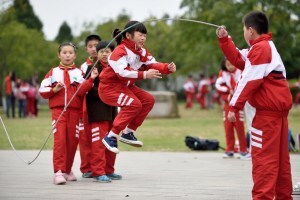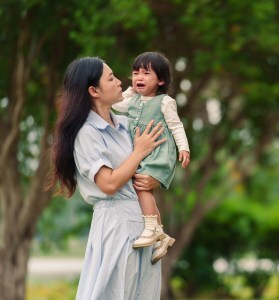From Fines to Pennies: Why China’s Childcare Subsidy Won’t Fix a Generation’s Broken Trust
In a bitter twist of history, China—once infamous for punishing families who had more than one child—is now offering the equivalent of $500 a year to coax young adults into having babies. It’s a staggering policy reversal, but one that’s too little, too late for many of the very people the government is now trying to court.
As CNN reports, this new childcare subsidy is part of China’s desperate scramble to reverse its declining birth rate, with 90 billion yuan ($12.5 billion) allocated to support families with children under three.¹⁷ In theory, it sounds promising. In practice, it’s a hollow gesture that fails to address the root of the problem: an entire generation that no longer believes in the promise of upward mobility, family stability, or state protection.
Take Zane Li, whose family was fined nearly three times their annual income for having a second child during the one-child policy era. That trauma—shared by millions—can’t be erased with a few hundred yuan. For many young Chinese adults, this isn’t just about money. It’s about mistrust, exhaustion, and a grim understanding that the future looks bleaker than the past.
A Symbolic Sum in a Sea of CostsLet’s be clear: 3,600 yuan ($500) a year per child is not enough to move the needle. According to the YuWa Population Research Institute, raising a child to age 18 costs over 538,000 yuan ($75,000)—and in major cities like Beijing and Shanghai, it easily surpasses 1 million yuan.¹⁶ The subsidy covers less than 1% of that burden.
If this were merely an economic issue, the math would speak for itself. But what China faces now is a deeper crisis of confidence—particularly among women.
The Gendered Trap of Parenting One of the most damning revelations in the article comes from young women like June Zhao and Gao, who watched their mothers juggle full-time jobs and the demands of hyper-competitive childrearing. They’ve inherited not just the pressure, but the disillusionment. And they’re not fooled by nationalist rhetoric that exhorts them to become “virtuous wives and good mothers.”
One of the most damning revelations in the article comes from young women like June Zhao and Gao, who watched their mothers juggle full-time jobs and the demands of hyper-competitive childrearing. They’ve inherited not just the pressure, but the disillusionment. And they’re not fooled by nationalist rhetoric that exhorts them to become “virtuous wives and good mothers.”
As sociologist Emma Zang notes, unless China tackles gender inequality, workplace protections, and paternity leave, fertility rates won’t bounce back. Instead, parenting looks like a trap—a high-stakes gamble that costs women more than they can afford physically, emotionally, and professionally.
“Lie Flat” and Step BackThe government’s messaging—have more babies for the good of the nation—rings hollow when it comes up against the lived realities of youth unemployment, unaffordable housing, and the soul-crushing “996” work culture (9 a.m. to 9 p.m., six days a week).
No wonder young people are choosing to “lie flat,” a popular buzzword that captures their quiet rebellion: opting out of marriage, parenthood, and the rat race altogether. Why build a future when all signs point toward burnout and disappointment?
From Coercion to Coaxing—But Trust Is Broken The irony cuts deeper than policy reversal—it’s written in blood and trauma that spans decades. The same state that once enforced what can only be described as systematic brutality is now pleading for fertility with cash incentives.
The irony cuts deeper than policy reversal—it’s written in blood and trauma that spans decades. The same state that once enforced what can only be described as systematic brutality is now pleading for fertility with cash incentives.
Between 1979 and 2015, Chinese authorities claim that 400 million births were “averted” by the one-child policy—a staggering euphemism for what often constituted violence against women and families. Blind lawyer Chen Guangcheng documented 130,000 forced abortions and sterilizations in just one county—Linyi—alone.¹ The scale transforms individual tragedy into systematic terror.
A single midwife in rural Jiangxi province told documentary filmmaker Nanfu Wang that she had performed “50,000 to 60,000 abortions” over 25 years, keeping count because she “felt guilty.” She revealed how “sometimes a late-term baby would be born alive, and she would have to kill the baby after delivering it,” describing how “her hands would tremble when she did that.”²
The Machinery of EnforcementThe brutality wasn’t sporadic—it was institutional. Provincial slogans revealed the systematic nature: “Anyone avoiding sterilization must be punished by bulldozing their house” (Sichuan) and “All villagers will be sterilized once a single villager violates the birth quota” (Yunnan).³
Family planning officials operated with impunity. As Chen Guangcheng testified, authorities would “lock you up in the family planning department and beat you everyday,” using cover stories of “education” and forcing victims to pay “tuition” for their detention.⁴ When women tried to hide pregnancies, “pig basket vans” became a chilling symbol—vehicles used to round up families and transport them for forced procedures.⁵
Individual Stories of Terror The personal accounts expose the human cost. Liu Ping’s testimony to Congress detailed being dragged from her home by six agents, held down on an operating table, and forcibly aborted while unconscious. She described pleading with authorities: “We only wanted another baby. I never wanted to do anything evil.”⁶
The personal accounts expose the human cost. Liu Ping’s testimony to Congress detailed being dragged from her home by six agents, held down on an operating table, and forcibly aborted while unconscious. She described pleading with authorities: “We only wanted another baby. I never wanted to do anything evil.”⁶
The 2012 case of Feng Jianmei became internationally notorious when photos showed her lying next to the corpse of her 7-month-old daughter, who had been killed by forced abortion because the family couldn’t afford the $6,300 fine.⁷ Chen Guangcheng documented how “doctors would inject poison directly into the baby’s skull to kill it” and “strangled or drowned” babies who were “born alive and began crying.”⁸
The policy’s enforcement extended beyond the pregnant woman: families reported that “aunts, uncles, cousins, pregnant younger sisters, in-laws” were detained, “didn’t get food or water, and all of them were severely beaten” until compliance was achieved.⁹
The Price of Speaking TruthThose who dared document these abuses faced severe punishment. Chen Guangcheng, after filing a class-action lawsuit on behalf of victims in 2005, was imprisoned for over four years, then kept under house arrest with 66 guards rotating around his home daily. His six-year-old daughter was denied education, and activists who tried to visit him were “beaten and detained”.¹⁰
No Reckoning, No Redemption This pivot from coercion to coaxing comes without acknowledgment, apology, or reparations. Chen Guangcheng estimates that “360 to 400 million young lives” were killed over 35 years—yet the government that perpetrated this violence now expects gratitude for $500 annual subsidies.¹¹
This pivot from coercion to coaxing comes without acknowledgment, apology, or reparations. Chen Guangcheng estimates that “360 to 400 million young lives” were killed over 35 years—yet the government that perpetrated this violence now expects gratitude for $500 annual subsidies.¹¹
The same officials who once measured success by abortion quotas now distribute propaganda about the “virtue and duty” of having children. But you cannot simply rebrand state terror as family support and expect trust to magically return.
The Demographic Time BombChina faces not just declining births but a rapidly aging population with insufficient young workers to support them. Right now China has a dependency ratio of about five working adults to support one retiree. That’s pretty good, that’s a very healthy ratio. In about 20 years that’s going to jump to about 1.6 working adults to support one retiree, creating an economic crisis of unprecedented proportions.¹²
This demographic collapse also carries a gendered dimension. China now has “30 million more men than women, 30 million bachelors who cannot find brides… They call them guang guan, ‘broken branches’… They are the biological dead ends of their family.”¹³ This gender imbalance, driven by decades of sex-selective abortions under the one-child policy, has created what experts describe as “a powerful, driving force behind trafficking in women and sexual slavery from nations surrounding China.”¹⁴
The Workplace Reality for WomenEven if young women wanted children, China’s economic structure punishes motherhood. A 2020 study reported that 45 percent of respondents said their employment was negatively affected by pregnancy or childrearing. Over one-third reported income loss, and more than 20 percent described losing opportunities for training or promotions. Another 13 percent said they were fired or forced to resign.¹⁵
The government’s messaging—have more babies for the good of the nation—rings hollow when companies systematically discriminate against mothers and the state provides inadequate support for working families.
A Crisis of LegitimacyChina’s fertility crisis isn’t a policy problem—it’s a crisis of legitimacy. A government that spent decades proving it could control life and death now discovers it cannot command love, hope, or trust. The subsidy isn’t about supporting families; it’s about propping up a system that has already failed them.
Until China fundamentally restructures its society to support families—by protecting working mothers, guaranteeing childcare, reducing education costs, and ensuring job security—its fertility crisis will only deepen. More fundamentally, until it acknowledges the systematic violence it inflicted on families for decades and makes genuine amends, no amount of cash can restore what was broken.
Because you can’t bribe hope. And you can’t subsidize away despair.
The post From Fines to Pennies: Why China’s Childcare Subsidy Won’t Fix a Generation’s Broken Trust first appeared on Amanda Roberts Writes.



